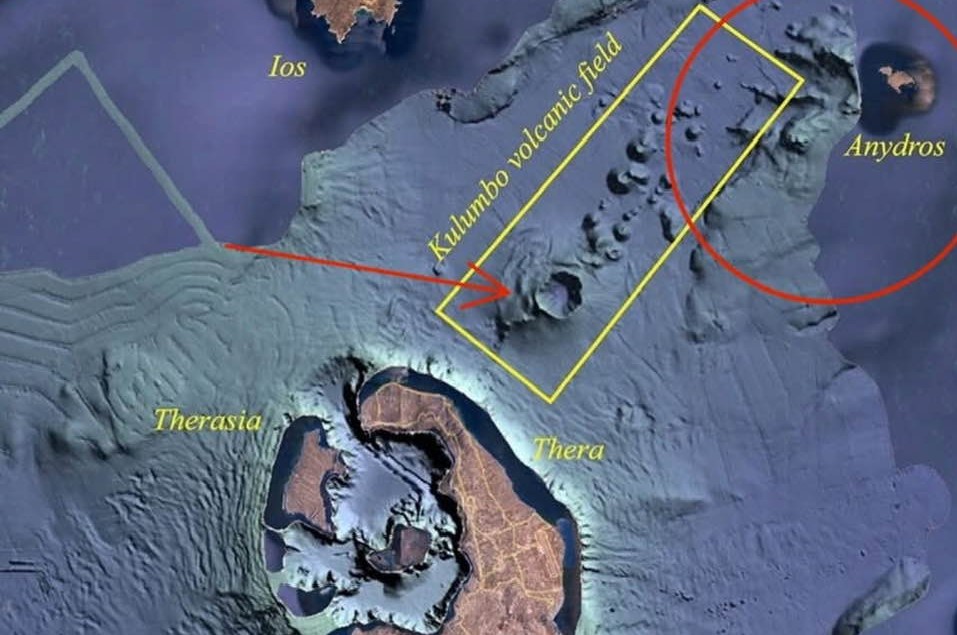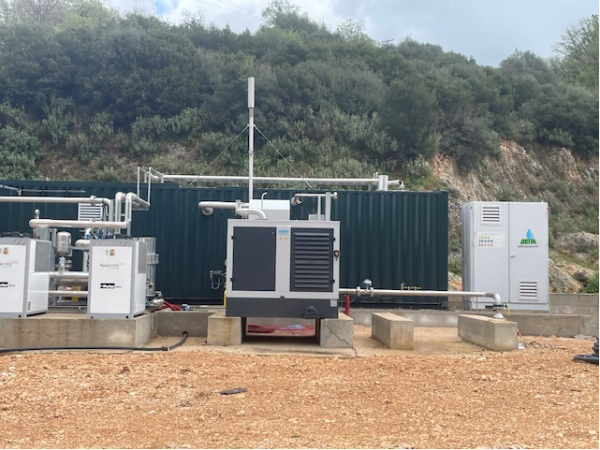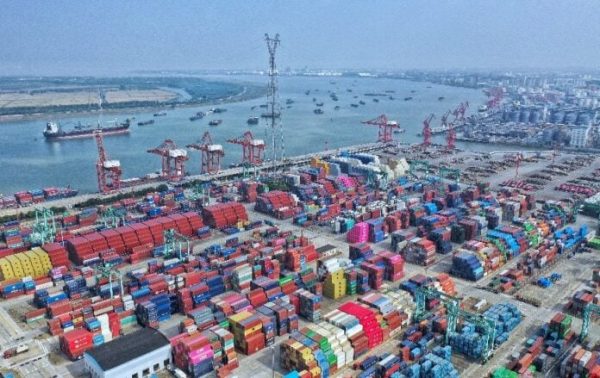
Seismic tremors continue to rattle the waters between Santorini, Ios, Amorgos, and Anafi, in the Cyclades, raising concerns about the Kolumbo submarine volcano. Despite a noticeable decline in the intensity of quakes over the past two days, prominent Greek seismologist Akis Tselentis urges caution, warning that seismic activity remains ongoing.
Tselentis, who resigned from Greece’s earthquake risk assessment board, citing political interference in scientific work, last week, addressed the situation in a social media update on Sunday morning, accompanied by scientific data visualizations.
He emphasized the need for an open-minded approach in science, advocating for broad perspectives and creative thinking rather than rigid dogma.
While recent tremors have been less perceptible, Tselentis clarified that seismic activity continues at lower magnitudes, while shared recorded seismicity data from the past 24 hours, underlining the importance of ongoing monitoring.
In his message, the professor also responded to premature claims by business owners and politicians suggesting that the crisis had passed and tourism could proceed unaffected. He cautioned against drawing hasty conclusions and reiterated the need for continued precautionary measures.
Looking ahead, the seismologist stressed that there is still a long way to go in understanding the evolving situation.
Current data indicate that Santorini’s two major volcanic systems, Nea Kameni and Kolumbo, have not yet been activated.
However, magma movement beneath the surface suggests increasing pressure, with uncertainty over whether it will erupt through a new vent near the uninhabited islet of Anydro, which lies 20 nautical miles northeast of Santorini, or from the underwater volcano of Kolumbo itself, Tselentis explained.
He also speculated on whether recent volcanic eruptions in Italy—namely Etna and Stromboli—could help relieve geological pressure in the broader region.
As a final note, he expressed hope that any potential lava flow in the coming weeks would be mild rather than explosive, whether it occurs at Kolumbo or to the northeast near Anydro.
“A further concern is the Amorgos fault, which triggered the devastating 1956 earthquake. While seismic activity has significantly declined, the possibility of a tectonic event around magnitude 6.0 remains on the table and must not be overlooked,” he warned.
Source: Tovima.com
Latest News

EU Condemns Trump Tariffs, Prepares to Retaliate
As tensions escalate, the EU is expected to continue negotiations with Washington while preparing for potential economic retaliation.

The Likely Impact of Trump Tariffs on Europe and Greece
Trump tariffs are expected to negatively affect economic growth in the Eurozone while Greece's exports could take a hit.

Motor Oil Results for 2024: Adjusted EBITDA of 995 mln€; Proposed Dividend of 1.4€ Per Share
Adjusted EBITDA for 2024 was down 33% yoy. The adjusted profit after tax for 2024 stood at 504 million euros, a 43% decrease from the previous year

Cost of Living: Why Greece’s 3% Inflation Is Raising Alarm
Greece appears to be in a more difficult position when it comes to price hikes, just as we enter the era of Trump’s tariffs.

Fitch Ratings Upgrades the Four Greek Systemic Banks
NBG’s upgrade reflects the bank’s ongoing improvements in its credit profile, Fitch notes in its report, including strong profitability, a reduction in non-performing exposures (NPEs), and lower credit losses

Trump to Announce Sweeping New Tariffs Wednesday, Global Retaliation Expected
With Trump's announcement just hours away, markets, businesses, and foreign governments are bracing for the fallout of one of the most aggressive shifts in U.S. trade policy in decades.

Inflation in Greece at 3.1% in March, Eurostat Reports
Average inflation in the eurozone settled at 2.2%, compared to 2.3% in February

Greece’s Unemployment Rate Drops to 8.6% in February
Despite the overall decline, unemployment remains higher among women and young people.

Jerry Kalogiratos Highlights Key Role of Energy Transition and Data Demand in LNG Outlook
Energy transition and the prospects of LNG were discussed at Capital Link’s 19th Annual International Maritime Forum, during a panel discussion with Jerry Kalogiratos (Capital Clean Energy Carriers Corp.)

Santorini Safe and Ready for a Dynamic Tourism Season
Authenticity, cultural heritage, and genuine experiences at the center of Santorini's new promotional campaign
























![ΕΛΣΤΑΤ: Αυξήθηκε η οικοδομική δραστηριότητα κατά 15,6% το Δεκέμβριο [πίνακες]](https://www.ot.gr/wp-content/uploads/2025/03/DSC9655-2-1024x569-1-90x90.jpg)
















 Αριθμός Πιστοποίησης
Αριθμός Πιστοποίησης